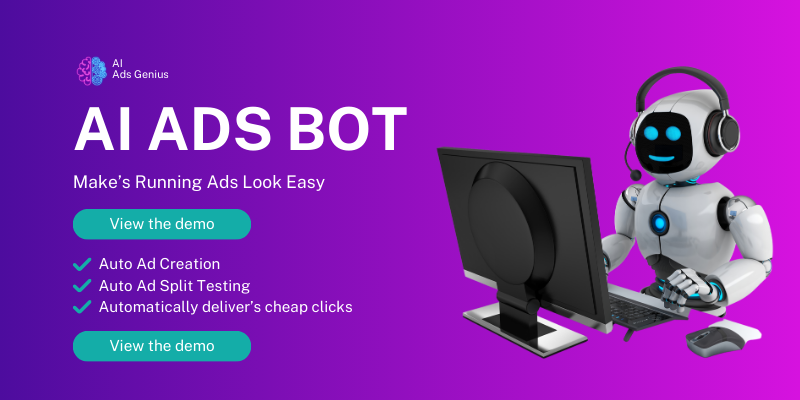Know Your Target Audience
Define Your Ideal Customer
Understanding who your ideal customer is, is the bedrock of any successful Facebook ad campaign. I’ve found that diving deep into customer demographics—age, interests, behaviors—really helps in shaping the ad’s messaging. Think about who’s most likely to purchase your Amazon products and start crafting your audience persona.
Engage with online communities related to your product. Look for forums or groups where people discuss similar items. Their topics of interest can give you invaluable insights into what resonates with them. It’s not just about selling your product; it’s about connecting with potential customers on their level.
Lastly, don’t forget to utilize Facebook’s audience insights tool. It provides a goldmine of data about user behaviors and preferences. Use this tool to refine your targeting further, ensuring that your ads reach the people most likely to convert.
Create Engaging Ad Content
Your Visuals Matter
The visuals in your Facebook ads can make or break your campaign. I always recommend using high-quality images that truly reflect your product’s features. A well-lit, engaging image can draw in your audience and make them stop scrolling.
Moreover, consider using videos. In my experience, video ads tend to have higher engagement rates than static images. You can showcase your product in action, which allows potential customers to visualize how it fits into their lives.
Don’t forget about text! A catchy headline with a clear call-to-action can be the push that users need to click on your ad. Keep it concise and to the point; clarity is key!
Utilize Facebook Ad Targeting Options
Custom Audiences Are Powerful
Creating custom audiences is one of the best strategies I’ve discovered while optimizing ads. By uploading email lists or using pixel data, you can retarget users who have already shown interest in your products. These people are more likely to convert since they’re already familiar with your brand.
Look into similar audience targeting too. Facebook can help you find people who share traits with your existing customers. This expands your reach without sacrificing quality targeting, which I think is a total win.
Lastly, don’t hesitate to experiment with location-based targeting. If your product is particularly popular in certain regions, you can ensure that users from those areas see your ads more often. Tailoring your approach can yield better results.
Monitor and Adjust Your Campaigns
Analyze Performance Metrics
Once your ads are live, it’s critical to start tracking their performance. I can’t emphasize enough how important it is to keep an eye on metrics like click-through rates, conversion rates, and return on ad spend. These numbers tell you which ads are working and which aren’t.
Use A/B testing for different versions of your ads. This lets you experiment with various headlines, visuals, and target audiences. In my experience, tiny tweaks can lead to significant changes in performance, so it’s worth the effort!
Always be ready to pivot. If you see an ad isn’t performing well, don’t hesitate to change it up or even stop it altogether. Flexibility and continuous optimization are essential in achieving long-term success.
Leverage Facebook’s Ad Features
Utilize Dynamic Ads
Dynamic Ads have been a game changer for me. They automatically show the right products to users who have expressed interest in them across various online touchpoints. This not only saves time but also ensures that the most relevant products are being highlighted to potential buyers.
Take advantage of carousel ads as well. These allow you to showcase multiple products in a single ad, encouraging users to explore more of your offerings. In my experience, they often capture more attention than single-product ads.
Don’t forget about lead generation ads. They can help you build your email list quickly. By offering something of value—like discounts or exclusive content—you can collect contact info and follow up later, driving traffic to your Amazon products.
Effective Budget Management
Set a Realistic Budget
One of the first things I learned about Facebook ads is the importance of setting a budget that aligns with your marketing goals. It’s tempting to pour all your resources into your ads, but I’ve found that a well-planned budget typically yields better results in the long run.
Start small and scale up. Test different audiences and ad types with a limited budget to see what works best, then reinvest your profits back into the ads that perform well. This scale-up approach often leads to a more sustainable growth trajectory.
Lastly, monitor your spending. Use Facebook’s budget management tools to ensure that you aren’t overspending on applications or ad placements that don’t convert. Keeping a tight handle on your budget can significantly impact your overall profitability.
Frequently Asked Questions
1. How do I know who my target audience is?
Your target audience can be determined through research. Use tools like Facebook Audience Insights, engage in community forums, and conduct surveys of your existing customers to gather insights about their demographics, interests, and behaviors.
2. What’s the best type of ad for Amazon products?
Video ads and carousel ads tend to perform exceptionally well for Amazon products. They allow you to showcase your products engagingly and visually, allowing potential customers to see value before clicking through.
3. How often should I analyze my ad performance?
It’s advisable to check the performance of your ads at least once a week. This frequency allows you to make informed adjustments based on real-time data without having to wait too long between reviews.
4. What are dynamic ads?
Dynamic ads automatically show the right products to people who are most likely to be interested in them, based on their previous interactions on your site or app. This makes the ads highly targeted and efficient!
5. How can I effectively manage my budget for Facebook ads?
Start with a small budget, test different approaches, and only scale up successful ads. Use Facebook’s budget management tools to monitor and adjust your spending to ensure you’re getting the best possible return on investment.

